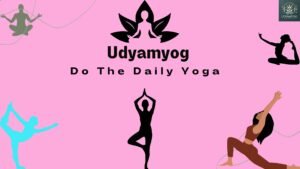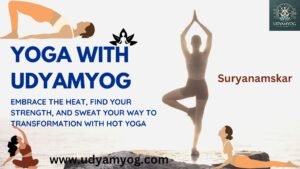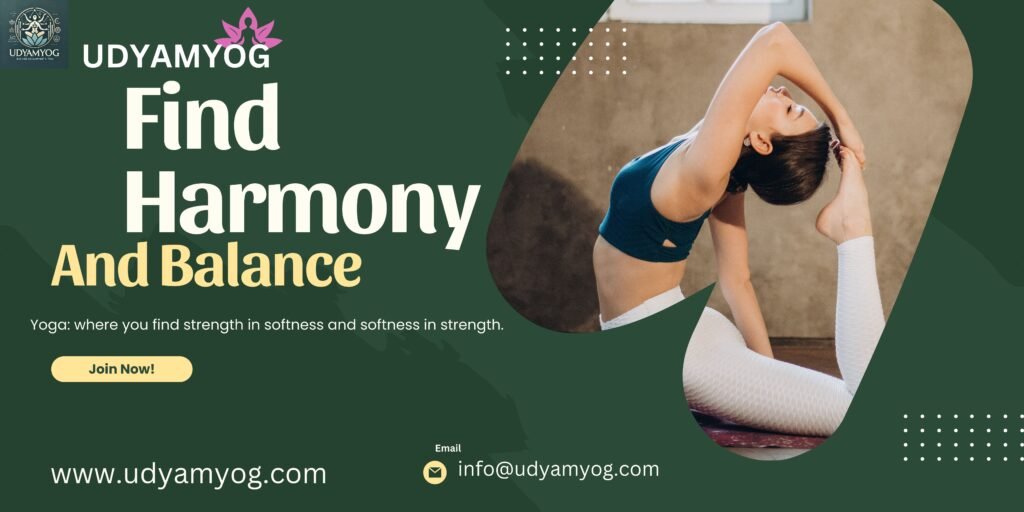How Yoga and Meditation Can Serve as Healthy Alternatives to Drug Use
At Udyamyog.com, We believe in the power of natural healing through mind-body practices like yoga and meditation. In today’s fast-paced world, many people turn to drugs and alcohol to cope with stress, anxiety, or emotional pain. However, these substances often create temporary relief at best and can lead to long-term physical and mental health problems. Fortunately, there are healthier alternatives that offer sustainable, life-enhancing results, yoga and meditation.
How Yoga and Meditation Can Serve as Healthy Alternatives to Drug Use

Both yoga and meditation are time-tested practices that provide not only physical benefits but also deep emotional and mental healing. In this article, we’ll explore how these activities can serve as powerful alternatives to drug use, helping individuals reduce dependency on harmful substances while improving overall well-being.
Understanding the Appeal of Drugs
Before diving into how yoga and meditation can help, it’s important to understand why people often turn to drugs in the first place. Drug use, particularly recreational or illicit drugs, is typically a way to, that you do yoga daily
Escape stress or emotional pain.
Alleviate anxiety or depression.
Cope with trauma or unresolved issues.
Feel a sense of euphoria or relaxation.
Meditation can help reduce the symptoms of anxiety,
Depression and anxiety-related stress disorders.
This can help in dealing with social concerns,
fears and obsessions.
While drugs may offer a temporary sense of relief, they often exacerbate underlying issues and can create a cycle of dependence. Moreover, long-term drug use can lead to serious physical and mental health challenges, including addiction, depression, anxiety, and cognitive impairment. But what if there was a way to achieve emotional balance, reduce stress, and even experience feelings of joy and calm-without the harmful effects of drugs? That’s where yoga and meditation come in.
How Yoga and Meditation Work as Alternatives to Drug Use.
Yoga and Meditation Address the Root Cause of Stress and Anxiety.
How Yoga and Meditation Can Serve as Healthy Alternatives to Drug Use

One of the primary reasons people turn to drugs is to deal with overwhelming emotions like stress or anxiety. Yoga and meditation, on the other hand, provide tools to address the root cause of these feelings. Through mindful breathing (pranayama) and physical postures (asanas), yoga teaches you to calm the nervous system, reduce cortisol levels, and bring your body back into a state of balance.
Meditation, in particular, helps you develop an awareness of your thoughts and emotions, allowing you to observe them without becoming overwhelmed. Over time, this practice helps reduce anxiety and increases emotional resilience, which can lessen the need to rely on substances for relief.
Increased Dopamine and Serotonin Production.
One of the most appealing aspects of drug use is the surge of “feel-good” chemicals in the brain-primarily. Dopamine. and. serotonin. Yoga and meditation have been shown to naturally increase the production of these same chemicals, promoting a sense of happiness, well-being, and calm without the crash or negative side effects of drugs.
Studies have demonstrated that meditation, especially mindfulness-based practices, boosts dopamine levels in the brain, providing a natural sense of euphoria. Similarly, the physical movement in yoga releases endorphins, which are known as the body’s “natural painkillers.”
Mindfulness as a Tool for Addiction Recovery.
Many people struggling with addiction feel trapped in automatic behaviors and cravings. Mindfulness-a core aspect of both yoga and meditation-helps break this cycle by bringing awareness to the present moment. When practiced consistently, mindfulness can help individuals recognize cravings without feeling compelled to act on them.
By focusing on the breath or body sensations during meditation or yoga, individuals can train their minds to pause before reacting, giving them the space to make healthier decisions. In this way, mindfulness practices help in managing cravings and reducing dependence on substances.
Yoga as a Holistic Tool for Addiction Recovery
Yoga offers a unique combination of physical, emotional, and spiritual benefits that make it particularly effective in addiction recovery. Here’s how:
Physical Strength and Flexibility: A Path to Self-Empowerment.
Addiction can take a significant toll on the body, leading to fatigue, muscle weakness, and poor health. Yoga helps rebuild strength, flexibility, and vitality through a variety of postures (asanas). Whether you’re practicing calming poses like Child’s Pose (Balasana) or energizing poses like Warrior II (Virabhadrasana), yoga allows the body to release built-up tension, detoxify, and rejuvenate.
As individuals gain physical strength, they also develop a sense of empowerment. This can help replace the feeling of helplessness or self-doubt that often accompanies addiction.
Breathwork (Pranayama) as a Stress Reliever.
Breathwork, or pranayama, is a core aspect of yoga that teaches individuals how to control and regulate their breathing. Many people under stress or anxiety often experience shallow, rapid breathing, which can increase feelings of panic or Discomfort.
Pranayama techniques like Ujjayi breath (victorious breath) or Nadi Shodhana (alternate nostril breathing) activate the parasympathetic nervous system, promoting a sense of calm and relaxation. These breathing techniques can be used anytime cravings arise, serving as a natural tool to de-stress without the need for drugs or alcohol.
Restorative Yoga for Healing Trauma.
How Yoga and Meditation Can Serve as Healthy Alternatives to Drug Use

For many people, addiction stems from unresolved trauma. Restorative yoga. offers a gentle, therapeutic approach to healing trauma by encouraging relaxation and emotional release. In restorative yoga, poses are held for longer periods of time, often supported by props like blankets and bolsters, allowing the body to fully relax and release tension.
This type of yoga can help individuals reconnect with their bodies in a safe, nurturing way, making it especially beneficial for those healing from the emotional pain that may have led to substance abuse.
Meditation as a Mental Detox for Addiction
Meditation works hand-in-hand with yoga as a powerful tool for addiction recovery. By cultivating awareness and mindfulness, meditation helps individuals manage the mental and emotional aspects of recovery.
Mindfulness Meditation for Cravings.
Cravings are a natural part of addiction recovery, and learning how to manage them without giving in is crucial. **Mindfulness meditation** helps individuals observe cravings without judgment, allowing them to pass without acting on them. By focusing on the breath or the present moment, individuals can learn to tolerate discomfort and recognize that cravings are temporary.
Loving-Kindness Meditation for Emotional Healing.
Addiction often leads to feelings of shame, guilt, or self-loathing. Loving-kindness meditation (Metta) helps individuals cultivate self-compassion and forgiveness. In this practice, individuals focus on sending feelings of love and kindness toward themselves and others. This can be incredibly healing for those recovering from addiction, as it promotes a sense of self-worth and emotional well-being.
Practical Steps for Incorporating Yoga and Meditation into Recovery
If you or someone you know is looking for a healthier alternative to drugs, here are a few practical steps to get started with yoga and meditation:
Start Small: Begin with just 5-10 minutes of meditation or a simple yoga routine. Over time, gradually increase the duration as you become more comfortable.
Seek Guidance: If you’re new to yoga or meditation, consider joining a beginner’s class or using an online resource like udyamyog.com to guide you through the basics.
Create a Routine: Consistency is key in developing a yoga and meditation practice. Set aside time each day for your practice, even if it’s just a few minutes.
Focus on Breath: Incorporate pranayama techniques to help calm the mind and body when cravings or stress arise.
Find Support: Many yoga and meditation communities are welcoming and supportive. Consider joining a local group or online forum to connect with others on the same journey.
Conclusion: Yoga and Meditation as Life-Enhancing Alternatives
At Udyamyog.com, We believe in the transformative power of yoga and meditation. These practices provide a natural, holistic approach to healing that goes far beyond temporary relief. By integrating yoga and meditation into daily life, individuals can reduce their reliance on harmful substances, heal from past trauma, and cultivate a sense of peace, balance, and well-being.
Whether you’re seeking an alternative to drug use, or simply looking to improve your physical and mental health, yoga and meditation offer a path to long-term wellness and emotional freedom. The journey may not be easy, but with patience, consistency, and self-compassion, recovery is possible
Feel free to reach out for guidance on how to get started, and explore our resources at www.Udyamyog.com. We’re here to support your wellness journey, every step of the way!


2 thoughts on “ How Yoga and Meditation Can Serve as Healthy Alternatives to Drug Use”